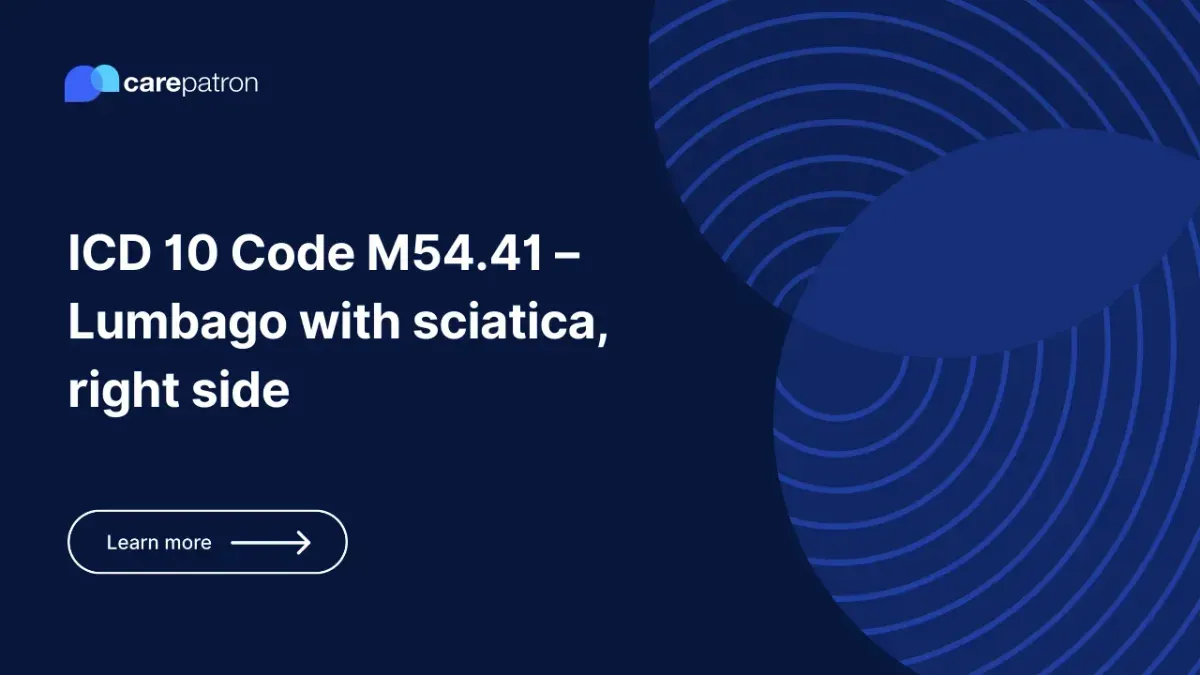
M54.41 – Lumbago with sciatica, right side
Learn all about the ICD-10-CM code M54.41 for Lumbago with sciatica on the right side through this guide.
Use Code
EHR and practice management software
Get started for free
*No credit card required
Free
$0/usd
Unlimited clients
Telehealth
1GB of storage
Client portal text
Automated billing and online payments
